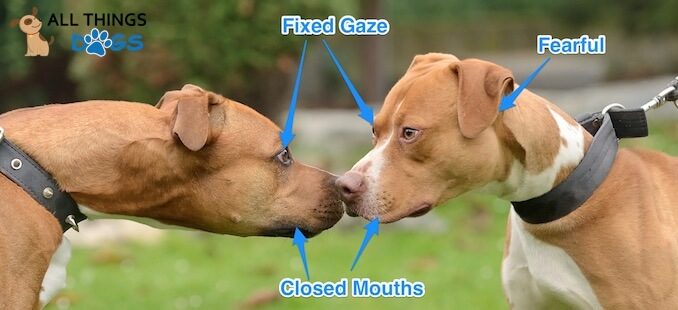Have you ever wondered what your furry friend is trying to tell you when they wag their tail or raise their paw? Understanding dog body language is crucial for building a strong bond with your canine companion. Dogs communicate primarily through their body movements, facial expressions, and vocalizations. By decoding their non-verbal cues, you can better understand their emotions, needs, and intentions.
One of the first things to observe is a dog’s tail wag. While many of us associate a wagging tail with happiness, it’s essential to pay attention to the speed, height, and direction of the wag. A slow tail wag may indicate caution or uncertainty, while a fast and high wag is a sign of excitement or happiness. On the other hand, a tucked tail between the hind legs indicates fear or submission.
Another crucial aspect of dog body language is their facial expressions. Just like humans, dogs use their facial muscles to convey various emotions. Pay attention to their eyes, ears, and mouth. Wide eyes can indicate fear or anxiety, while a relaxed and soft gaze suggests contentment. Ears held upright signals alertness, whereas flattened ears can mean fear or submission. Similarly, a closed mouth with relaxed lips indicates a calm and relaxed state.
Posture and body movement are also essential elements of understanding dog body language. A dog that stands tall with a straight back and raised head typically displays confidence and dominance. Conversely, a lowered body posture with a hunched back suggests fear or submissiveness. Take note of their weight distribution as well. If a dog leans forward, it can be a sign of aggression or readiness to play, depending on their overall body language.
It’s important to remember that understanding dog body language goes beyond individual cues. It’s essential to consider the context and other accompanying behaviors. For example, a dog may wag their tail while growling, indicating mixed emotions or potential aggression. By observing their body language as a whole, you can better interpret their communication and respond appropriately.
To deepen your understanding of dog body language, it can be helpful to familiarize yourself with a comprehensive dog body language chart. These charts depict various poses, expressions, and movements, providing a visual guide to deciphering your furry friend’s communication. By studying these charts and observing dogs in different situations, you can become more adept at recognizing and responding to their needs.
Remember, every dog is unique, and their body language may vary slightly depending on their breed, personality, and experiences. By investing time and effort into learning to interpret their non-verbal cues, you can enhance your bond with your furry companion, ensuring a happier and healthier relationship.




